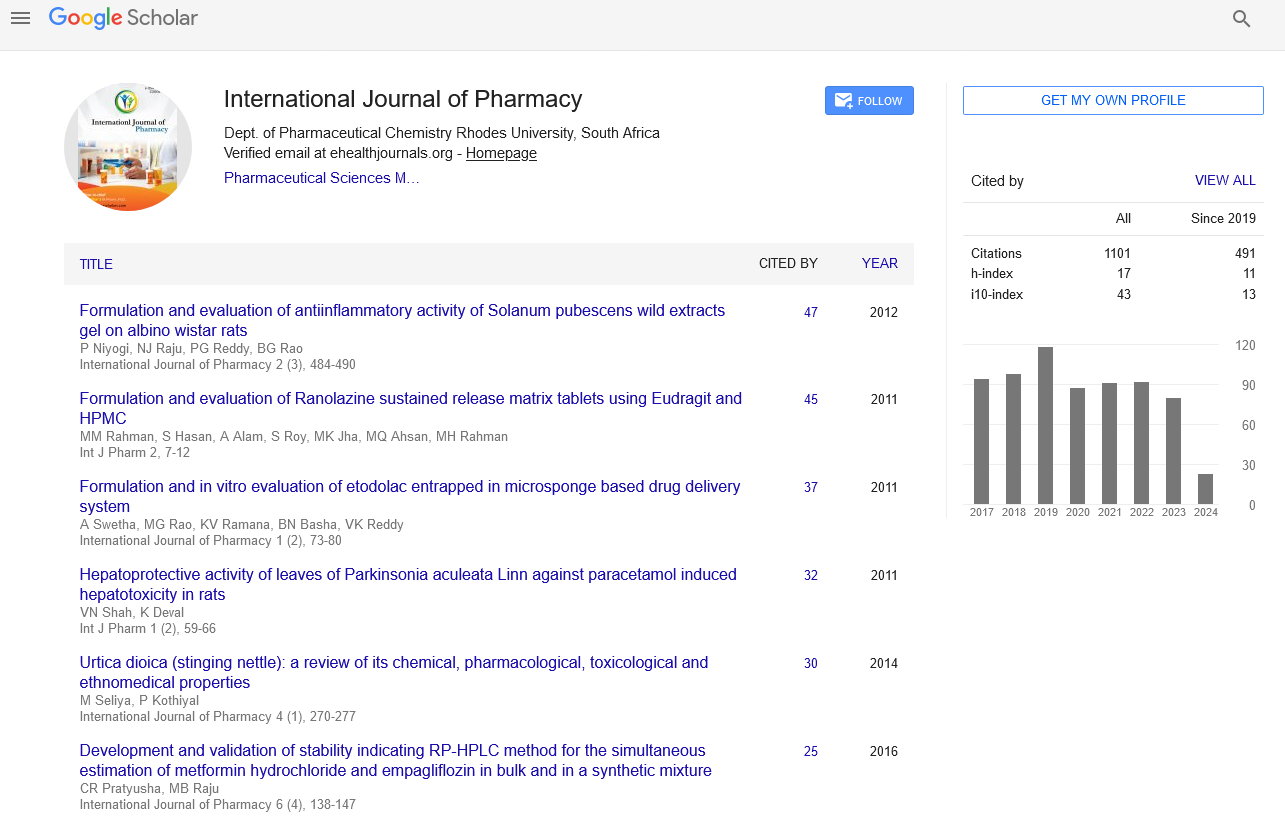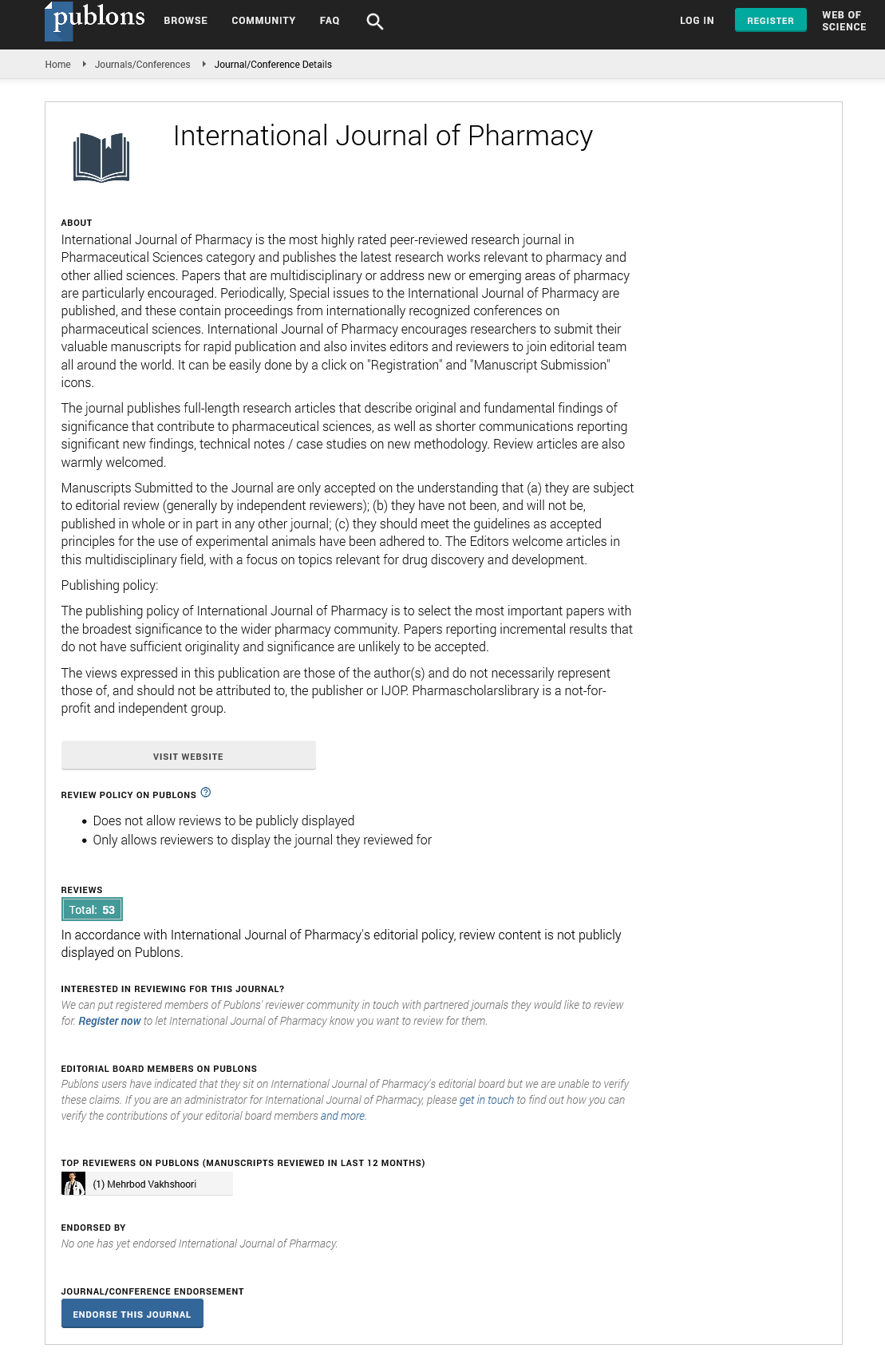HTML
Commentary - (2022) Volume 12, Issue 4
Forensic Analytical Findings in Synthetic Opioid Deaths
Kimmo Arana**Correspondence: Kimmo Arana, Department of Pharmacy and Research, Utah Valley University, Orem Utah, United States, Email:
Received: 07-Mar-2022, Manuscript No. IJP-22-64419; Editor assigned: 11-Mar-2022, Pre QC No. IJP-22-64419 (PQ); Reviewed: 28-Mar-2022, QC No. IJP-22-64419; Revised: 04-Apr-2022, Manuscript No. IJP-22-64419 (R); Published: 11-Apr-2022, DOI: 10.37532/2249-1848-2022.12(4).18
Description
Overdose fatalities from opioids continue to rise in the United States, killing over 42,000 individuals in 2016. Methadone, natural and semi-synthetic opioids (e.g., oxycodone, hydrocodone), heroin, and synthetic opioids were identified in these deaths, in increasing order (e.g., fentanyl, fentanyl-analogs). Deaths from synthetic opioids (excluding methadone) and heroin in particular increased dramatically between 2015 and 2016. Because of its ease of manufacture and widely accessible precursors sent from China, fentanyl and its derivatives have become increasingly prevalent as adulterants, mostly in heroin, but also in other substances such as cocaine and synthetic cannabinoids. Fentanyl analogues, in addition to being prevalent in other drug supplies, have been sold as "research compounds" and are easily obtained over the internet. The frequency of opioid-related fatalities has grown dramatically in recent years due to its high potency and the growing usage of heroin as a beginning opioid of addiction (8.7 percent in 2005 vs. 33.3 percent users in 2015). Given that opioid novices have a low tolerance for opioids, a little error in dose inherent in heroin usage, as well as the presence of potent fentanyl and analogues, can be lethal.
Fentanyl, its analogues (e.g., acetyl fentanyl, 3-methylfentanyl, alphamethylfentanyl, furanyl fentanyl), and the new generation synthetic opioids (e.g., AH-7921, U-47700, MT-45) have a chemical core structure that is completely different from morphine, a naturally occurring opioid from Papaver somniferum and the reference compound of the opioids These opioid receptor agonists also cause dose-dependent respiratory depression, which is the primary reason for their life-threatening potential. The next generation opioids AH-7921 and MT-45 are similar to morphine in strength, whereas U-47700 is approximately 7.5 times more powerful.
The Controlled Substances Act of 1970 (CSA) of the United States governs the use and distribution of synthetic opioids. As new compounds develop threaten to public safety, the DEA can issue an emergency schedule to restrict manufacture and use of these dangerous chemicals and help in the prosecution of drug dealers for a limited time until formal procedures are completed. The CSA classifies substances into schedules depending on their safety, medical use, and potential for misuse. A Schedule I drug is one that has no currently recognized medicinal purpose and a significant potential for misuse. Furanyl fentanyl, U-47700, acetyl fentanyl, and 3-methyl fentanyl are examples of synthetic opioids under Schedule I. Schedule II opioids, such as fentanyl, which is used as an anesthetic and analgesic, as well as carfentanil, remifentanil, and sufentanil, have a significant potential for misuse but have contemporary therapeutic applications. In February 2018, the DEA issued a temporary scheduling order for all fentanylrelated substances (including all analogue modifications), which covered all substances that were not already classified into Schedule I of the CSA in an aggressive attempt to regulate the manufacture and subsequent trafficking of new synthetic opioids into the US.
The spread of these novel synthetic opioids poses a significant issue in forensic toxicology. To begin with, the majority of these compounds are not found in normal laboratory screening and confirmation procedures. Furthermore, due to the low dosages of these highly potent medications used, the quantities predicted in biological samples are in the ng to pg/ mL or ng to pg/g range, necessitating sensitive analytical procedures. However, despite the constant development of novel derivatives, the main problem of these target approaches, which use quadrupole mass spectrometers, is that they are constrained by the available reference standards. High resolution mass spectrometry (time-of-flight, orbitrap) has the potential to identify novel chemicals in the absence of a reference standard, although this technology is not widely used in most forensic laboratories.
In terms of biological data, the majority of these procedures were established in blood or urine, and the target analytes are the original chemicals rather than the metabolites. Other biological specimens, such as vitreous humor, liver, and brain, are often studied in postmortem toxicology. Unfortunately, there are no adequately established techniques for determining synthetic opioids in these specimens in the literature. This is owing, in part, to the frequent changes in illegal synthetic opioids being detected, as well as laboratories' inability to justify the substantial effort and cost associated with completely validating a technique for a substance that may only be present in cases for a short period of time. To ensure the analytical quality of the reported concentrations, forensic toxicology analytical procedures are typically verified in the relevant biological sample using the recommendations issued by the Scientific Working Group in Forensic Toxicology (SWGTOX). Analyzing metabolites in various biological matrices may enhance the interpretation of the data by widening the detection window and determining whether the death was acute or delayed by assessing the metabolite-to-parent ratios.
Conclusion
Aside from the analytical difficulties connected with synthetic opioids, the interpretation of the results is exceedingly challenging due to the lack of available postmortem data. The forensic toxicologist encounters a lot of significant challenges while doing postmortem toxicology interpretation. The variety of postmortem specimens (blood, urine, vitreous humor, tissues, hair), the absence of reference databases, the presence of other substances (e.g., benzodiazepines, alcohol), opioid tolerance, and postmortem phenomena (postmortem redistribution and drug instability) all complicate interpretation of the analytical results.
Manuscript Submission
Submit your manuscript at Online Submission System
Google scholar citation report
Citations : 1101
International Journal of Pharmacy received 1101 citations as per google scholar report
International Journal of Pharmacy peer review process verified at publons
Indexed In
- CAS Source Index (CASSI)
- HINARI
- Index Copernicus
- Google Scholar
- The Global Impact Factor (GIF)
- Polish Scholarly Bibliography (PBN)
- Cosmos IF
- Open Academic Journals Index (OAJI)
- Directory of Research Journal Indexing (DRJI)
- EBSCO A-Z
- OCLC- WorldCat
- MIAR
- International committee of medical journals editors (ICMJE)
- Scientific Indexing Services (SIS)
- Scientific Journal Impact Factor (SJIF)
- Euro Pub
- Eurasian Scientific Journal Index
- Root indexing
- International Institute of Organized Research
- InfoBase Index
- International Innovative Journal Impact Factor
- J-Gate

